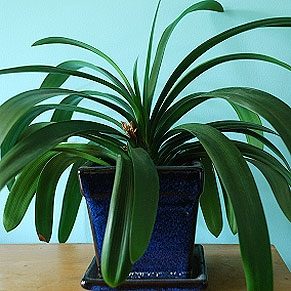
Liner Myths
Don’t line pot bottoms with pebbles. Anyone telling you to fill the bottom inch or so of indoor plant containers with pebbles is just trying to sell you a load of fancy stones. It’s a waste of money, and it’s not good for the plants. Although the conventional wisdom used to be that pebbles or shards of clay pots in a container improved drainage, plant experts now say such stones occupy space the plant roots need and may encourage the growth of fungus. Instead, you want a solid column of soil right down to the bottom of the container. If you’re worried about soil washing out of a pot’s drain hole, cover the hole with a scrap of window screen or a single pot shard before filling the pot with soil.
Use Freebies
Those free containers that you throw away every year when buying plants and flowers make great plant containers. Likewise, popcorn tins and plastic ice cream buckets make particularly good outdoor flowerpots. All you have to do is drill holes in the bottom of them for drainage. If the exterior of the container is not to your liking, a can of spray paint will change that quickly.
Going on Vacation? No Problem!
One common solution is to pay someone to water your indoor and outdoor container plants. But you can greatly reduce the need for watering by taking a few extra steps before you leave home.
1. Always use a potting mix with moisture-retaining polymers (or add polymers to the mix). These compounds retain water for later use by thirsty plants.
2. When you’re headed off on vacation or a work trip, move your plants out of direct sunlight-behind windows with sheer curtains is a great spot.
3. Turn down the thermostat in winter to keep the interior of the house cool.
4. Move pots and containers close together, so the plants will provide each other with shade and humidity.
5. Place sensitive plants inside tents made from white plastic trash bags-place a bag upside down over each plant, using stakes as “tent poles” to keep the plastic off the foliage. Cut a few small holes in the plastic to allow oxygen to reach the plant.
6. To conserve water in outdoor containers, move them to a location sheltered from the wind and cluster them together.
7. You can also bury potted plants to their rims temporarily and mulch around them.
Other Vacation Solutions
Put an IV Drip on That Plant!
You can pay $100 or more for electronically controlled devices that automatically water your plants while you’re away from home. Or you can use the low-tech, inexpensive, and hook your plants up to an IV drip. Plastic intravenous solution bags can be refilled with tap water by
removing the spike at the mouth of the bag. Hang a bag above a plant and set the dial to slow drip. Only medical professionals can buy intravenous equipment, so ask a friend who works in the field for used bags and feeder lines.
Use a Rope to Water Your Plants
Another solution for watering while you’re away takes advantage of the capillary action of natural fibers. Place your potted plants next to a tub of water, then cut natural-fiber clothesline or other rope in lengths that will reach from the tub to each pot. Anchor one end of each cord in the tub with a rock or brick, and coil the other end around the soil atop each pot. Water will flow across the rope to the plants.
Salvage Your Dried-Out Plants
If your plants do dry out completely while you are away, you can revive them when you get home by soaking the containers in a tub or kiddie pool. Use warm (not hot) water, and submerge the pots until bubbles stop appearing from the soil. Remove the pot and drain any excess water.